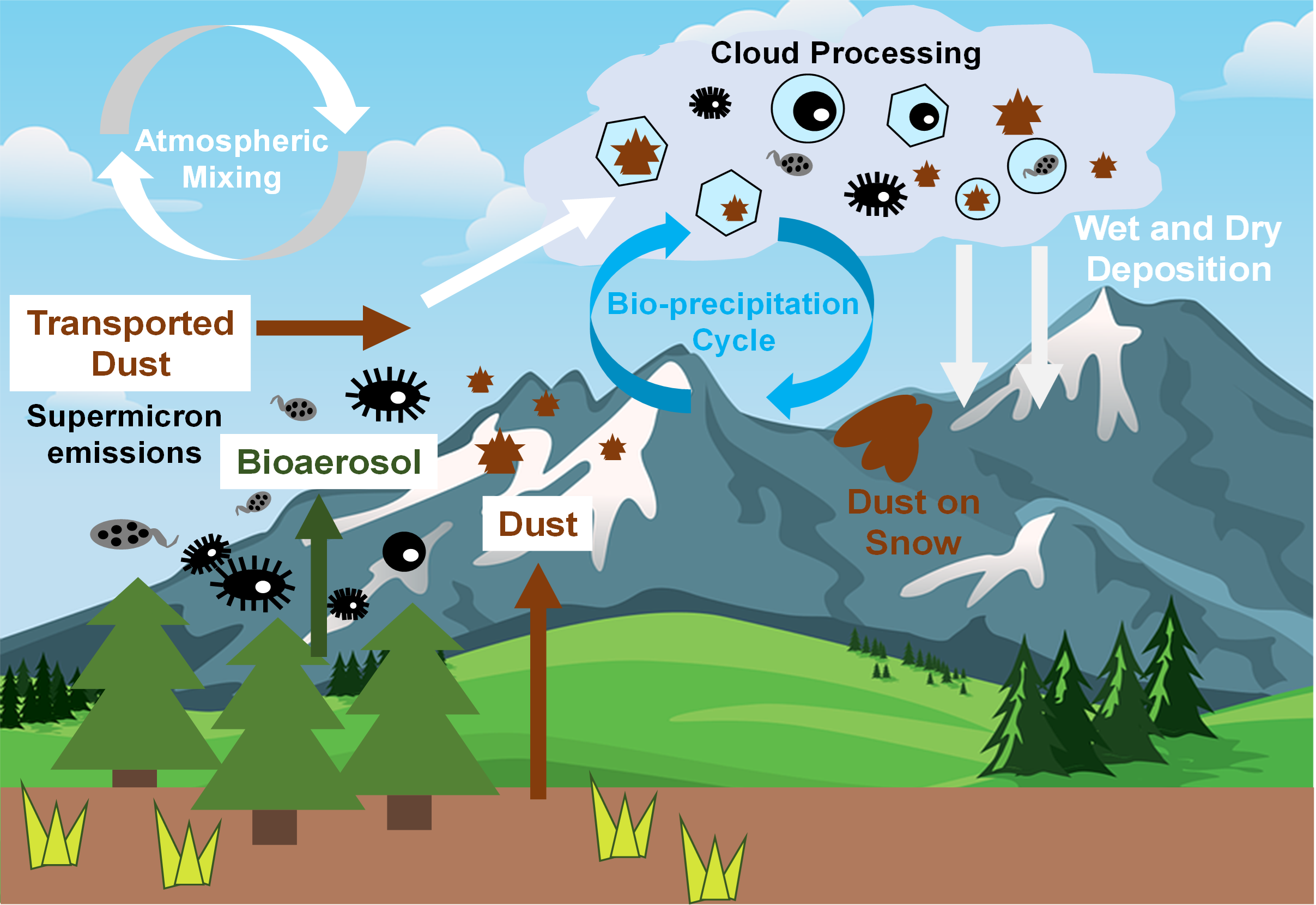Surface Atmosphere Integrated Field Laboratory (SAIL) aerosol regimes and processes, including supermicron and bioaerosol events measured during the SAIL Supermicron Bioaerosol (SSB) campaign
Authors
Allison C Aiken — Los Alamos National Laboratory *
Katherine Beem Benedict — Los Alamos National Laboratory
Abu Sayeed Md Shawon — Los Alamos National Laboratory
Kyle Gorkowski — Los Alamos National Laboratory
Juarez Viegas — Los Alamos National Laboratory
John Bilberry — Los Alamos National Laboratory
Daniel Feldman — Lawrence Berkeley National Laboratory
Category
ARM field campaigns – Results from recent ARM field campaigns
Description

A key component to understanding mountain hydrology is the role that aerosols play across the different seasons at high elevation. Aerosols, especially absorbing aerosols like black carbon, brown carbon and dust that are transported in the atmosphere can be deposited on surfaces with high albedos like snow, greatly altering surface radiation, snowmelt and the overall watershed. Here, we present data from the ARM AMF2 Aerosol Observing System (AOS) deployed on Crested Butte Mountain as a part of the Surface Atmosphere Integrated Field Laboratory (SAIL) campaign. We also present data from the SAIL Supermicron Bioaerosol (SSB) campaign that was designed to complement the larger ARM SAIL science goals to understand aerosol processes and aerosol-cloud interactions in the East River Watershed Basin. SBB was designed to deploy supermicron and bioaerosol specific real-time instruments capable of collecting data in high-time resolution to elucidate the local and regional supermicron events. The goal of this work is to explore the properties of aerosol, absorbing aerosol, supermicron and bioaerosol events and their diurnal variabilities in complex high elevation mountainous sites like Crested Butte, CO, USA.
Supermicron aerosols are important in high mountainous areas as shown in Figure 1, including their ability to serve as nuclei for cloud droplets, ice crystals, and precipitation. Bioaerosol are one type of supermicron aerosol whose role is not well understood, yet are known to impact human health, visibility, agriculture, and precipitation. To investigate ambient trends in supermicron and bioaerosol, we deployed the real-time Wideband Integrated Bioaerosol Sensor (WIBS-5, DMT) collocated with the ARM Aerosol Observing System at Crested Butte Mountain (elevation approximately 9500 ft) in Crested Butte, CO. Continuous data were collected in real time with the WIBS-5 during spring and summer 2022. We report the fluorescence from excitation measured by the WIBS-5 at two different wavelengths, 280 and 370 nm. Particles fluoresce due to tryptophan and nicotinamide adenine dinucleotide (NADH) that are bio-markers present in microbiological cells and plant tissue. We categorized the detected particles based on where they fluoresce between 310-400 nm and 420-650 nm. We also deployed two Modulair-PM’s (MOD-PM, QuantAQ) that will collect data for one year from June 15, 2022 – June 15, 2023. The Modulair-PM’s report number concentrations for particles between 0.35 µm and 40 µm as well as PM1, PM2.5, and PM10 mass loadings. Here, we present different aerosol, supermicron and bioaerosol events during SAIL and their interactions with large scale meteorological patterns such as precipitation events.
Lead PI
Allison C Aiken — Los Alamos National Laboratory

